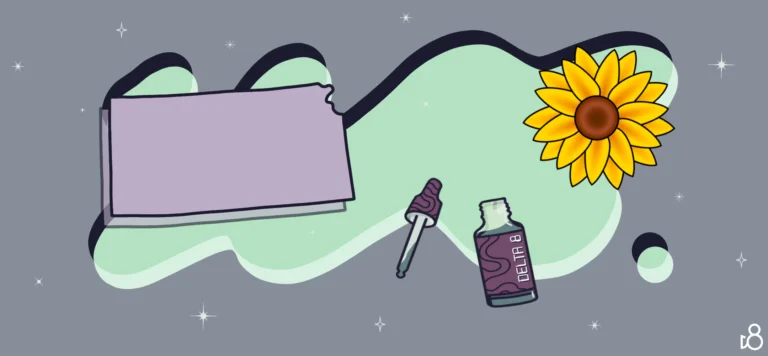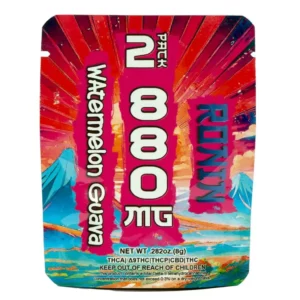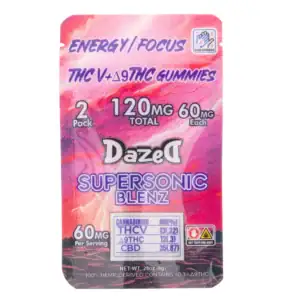How Many Drops in 1 ml of Tincture: A Precise Measurement Guide
Feeling like your head’s about to explode trying to figure out the magic number of drops in a milliliter of your special mix? You’re not alone! Whether you’re brewing herbal teas or mixing up some **CBD** goodness, getting the dosage just right is super important. Here’s a fun fact to ease your mind: On average, 1 ml of any liquid magic lands you at about 20 drops. Now, this number might slide up or down depending on if your dropper’s being stubborn or if your concoction’s thicker than a bear’s winter coat. But hey, let’s not split hairs. Ever found yourself playing mad scientist without a clue? Here’s a nugget of gold for you. Strap in, because getting this down could make you the go-to genie of the potion world. Why hang around? Unraveling the secrets of tinctures could totally flip your world upside down – it’s a thrilling rollercoaster ride!
Tinctures are widely used in natural medicine, as they offer a convenient way to deliver the desired therapeutic effects of active compounds found in botanicals. These potent liquid extracts are typically taken sublingually by holding a few drops under the tongue for 30 seconds to a minute, allowing for faster absorption and a higher bioavailability than other oral dosage forms like capsules and pills. When using a tincture, it is crucial to follow the recommended dosing guidelines and adjust the number of drops accordingly to ensure the desired results while minimizing the risk of adverse effects.
If the dropper that comes with a tincture does not have a calibrated marking for measuring milliliters, one can still accurately measure their daily dose using the general drop-to-milliliter conversion. If, for example, the suggested dosage is 2 ml of tincture, one could administer around 40 drops (20 drops per ml) for a precise and effective dose. Keeping in mind the importance of accurate dosing, it is vital for consumers to familiarize themselves with the tools available to them or consult a healthcare professional for guidance in navigating the world of tinctures and their applications.
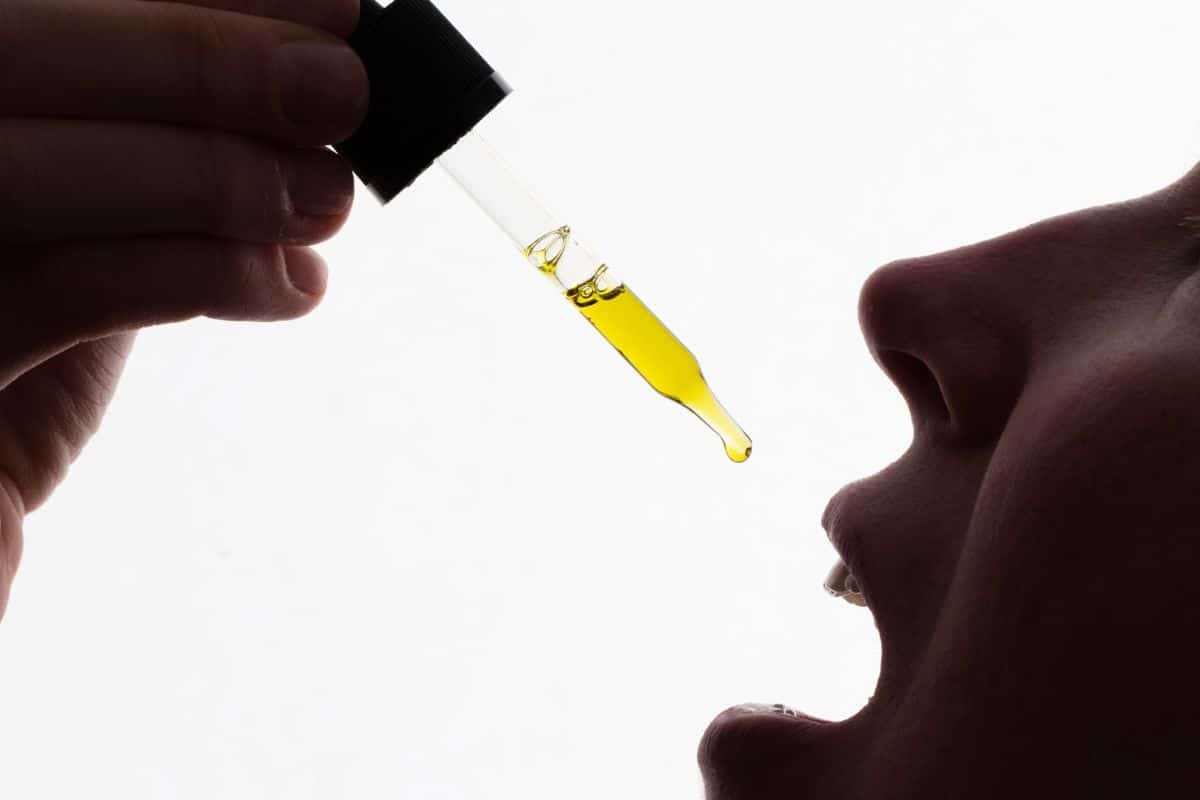
Understanding Tinctures
Tinctures are liquid extracts of various substances, often made from plants or herbs. They are typically used for their potential therapeutic properties. A common type of tincture is a cannabis tincture, which contains cannabinoids such as CBD oil. These tinctures are often used for their potential health benefits.
When using a tincture, the dosage is typically measured in drops, as the concentration of the substance can vary. To determine the number of drops in 1 ml of a tincture, it is important to first understand the specific concentration of the tincture being used. Herbal tinctures, for instance, can have different concentrations of plant extracts, which can affect the number of drops needed for a desired effect.
Full spectrum tinctures, in particular, contain a range of cannabinoids and other compounds from the plant, such as terpenes and flavonoids. These can potentially provide a more comprehensive effect, as they work together synergistically – often referred to as the entourage effect.
When using CBD oil or other cannabinoid tinctures, it is important to start with a low dose and increase gradually, as the effects can vary from person to person. There may be specific guidelines on dosage depending on the type and purpose of the tincture being used. For instance, when using CBD tinctures, it is essential to understand the proper method of consumption, as not all CBD tinctures are suitable for vaping.
In summary, understanding tinctures and their dosages is important for optimal and safe use. By knowing the concentration of a specific tincture and adjusting the drops accordingly, users can ensure they are consuming the appropriate amount for their individual needs.
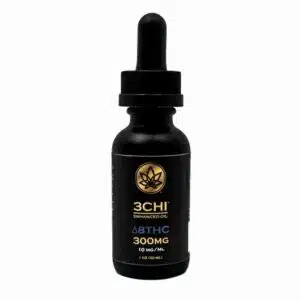
Drops in Tinctures
Tinctures are liquid extracts of herbs or other compounds, often used for medicinal purposes. They are usually administered in small quantities, measured in drops. The number of drops in 1 ml of tincture can vary depending on factors such as the viscosity of the liquid and the dropper used.
When using a tincture, it’s important to get the correct dosage for optimal results. A common dropper holds approximately 20 drops per ml. However, this number may vary with different droppers, which could hold more or fewer drops per ml. Paying attention to the dropper’s capacity and the recommended tincture dosage can help ensure proper administration.
Some tinctures are more potent than others, due to differences in the concentration of active compounds. The potency may be expressed in milligrams (mg) per drop. It’s essential to follow the suggested dosage in mg provided by the manufacturer, as it can differ for each specific tincture product.
When using a tincture, make sure to properly fill and release the dropper to ensure accurate dosing. Gently squeeze the rubber top of the dropper to release the desired number of drops into a glass of water or juice, or directly under the tongue. Hold the tincture under the tongue for a moment before swallowing to promote better absorption into the bloodstream.
In conclusion, the number of drops in 1 ml of tincture can vary depending on factors such as the dropper used and the specific tincture product. It’s important to follow the manufacturer’s dosage recommendations, which may be expressed in drops or milligrams, to achieve the desired effects.
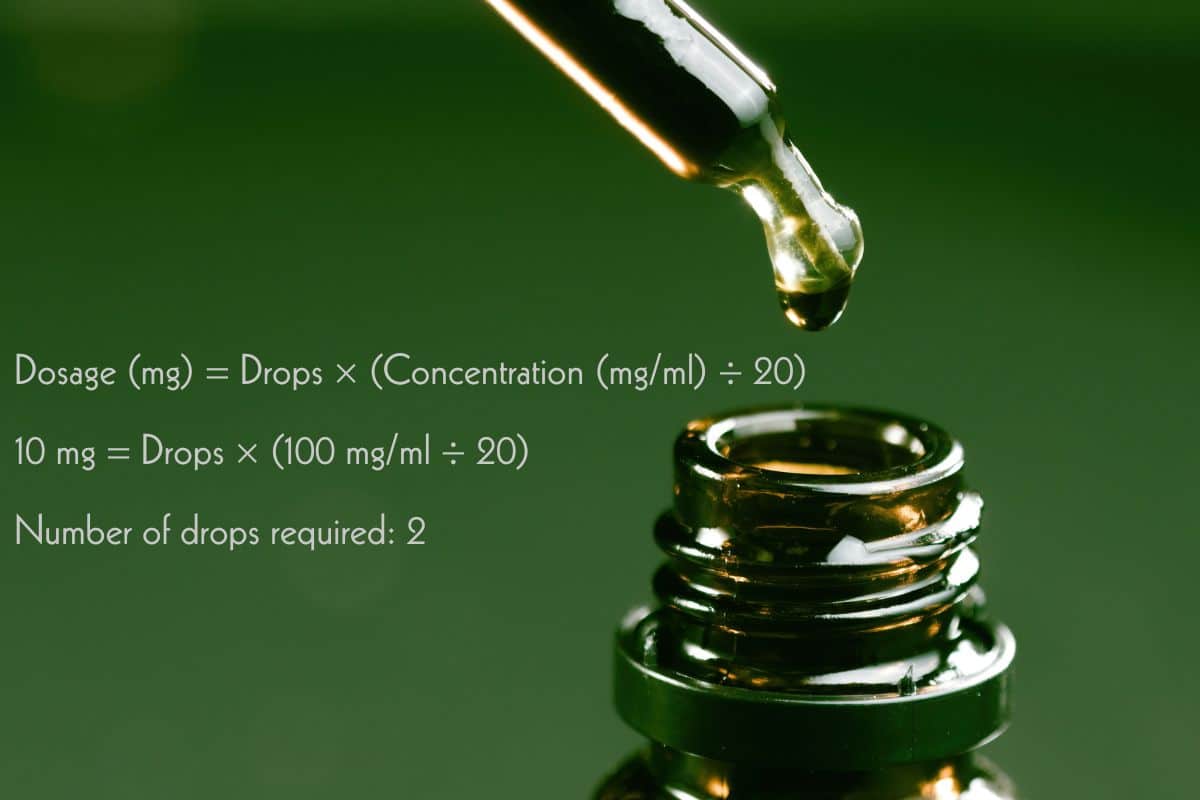
Dosage Calculation
When it comes to tincture dosage, it’s essential to determine how many drops are in 1 ml of tincture. This information is vital for accurately administering the recommended dose of herbal or medicinal tinctures. The standard drop size is approximately 0.05 ml, which means that there are generally 20 drops in 1 ml of tincture.
However, the drop size may vary depending on the dropper or the tincture’s viscosity.
- Calculating tincture dosages can be done using a simple formula. First, determine the concentration of the active ingredients in the tincture by checking the product label. This is usually expressed in milligrams (mg) per milliliter (ml). Next, use the following equation:
- Dosage (mg) = Drops × (Concentration (mg/ml) ÷ 20)
For instance, if a tincture has a concentration of 100 mg/ml and the recommended dosage is 10 mg, then the calculation would be:
10 mg = Drops × (100 mg/ml ÷ 20)
Hence, the number of drops required would be 2.
To simplify the process, some manufacturers provide a dosage chart along with their products. These charts indicate the number of drops corresponding to specific dosages based on the product’s concentration and individual needs. Additionally, you may encounter dosage calculators available online to assist in determining the appropriate number of drops needed.
It is crucial to follow the recommended dosage guidelines for each tincture to avoid potential side effects or interactions. These guidelines are often based on factors such as the specific ailment being treated, individual weight, age, and the product’s potency. When starting a new tincture, it’s advised to begin with the standard dose and monitor the effects. Gradually adjust the dosage as necessary under the supervision of a healthcare professional.
In summary, accurately calculating the number of drops in 1 ml of tincture is essential for proper administration and achieving the desired therapeutic effects. Always follow the recommended dosage guidelines and consult with a healthcare professional when in doubt or if any adverse reactions occur.
| Marker | Calculation | Calculated as | Description/Relevance |
|---|---|---|---|
| THCtot | Σ THC, THCa, CBN | THC, THCa, CBN (CP/FP) | Total THC (‘potency marker’) |
| – Dominant in classic plants and preparations | |||
| – Constituent with the highest CB1/CB2 receptor activity, plus its unstable parent and main degradation product | |||
| – Psychotropic with legal/forensic importance | |||
| CBDtot | Σ CBD, CBDA | CBD (CP) | Sum of CBD and CBDA |
| – Dominant in some chemotypes (intermediate, hemp) | |||
| – Main constituents without CB1/CB2 receptor affinity | |||
| – Non-psychotropic but specific pharmacological effects | |||
| CBGtot | Σ CBG, CBGA | CBG (CP) | Sum of CBG and CBGA |
| – Dominant in some chemotypes | |||
| – Main constituents without CB1/CB2 receptor affinity | |||
| – Non-psychotropic but specific pharmacological effects | |||
| CAN | Σ neutral cannabinoids | THC, CBD, CBG, CBN (CP/FP) | Neutral (decarboxylated) cannabinoids |
| – Dominant upon excessive drying, heating, age | |||
| CANA | Σ acidic cannabinoids | THC, CBD, CBG, CBN (CP/FP) | Acidic (carboxylated) cannabinoids |
| – Dominant in fresh plants and preparations without heating | |||
| CANtot | Σ neutral and acidic cannabinoids, CAN + CANA | THC, CBD, CBG, CBN (CP/FP) | Total cannabinoid content |
| oCAN | CANtot – (Σ THCtot + CBDtot + CBGtot) | THC (CP) | Other cannabinoids than those usually found as main cannabinoids in common chemotypes |
| CFL | CFL-A + CFL-B | CFL-A, CFL-B (CP) | Cannflavins (cannabis specific prenylated flavones) |
| TPC | Σ flavonoids and phenolcarbonic acids | Vitexin, chlorogenic acid (FP) | Total phenolic content (without CFL) |
| THCtot/(CBDtot + CBGtot) | Σ THC, THCa, CBN/Σ CBDtot, CBGtot | As for THCtot, CBGtot, CBDtot (CP/FP) | ‘Chemotype marker’ – Ratio main constituents in common chemotypes, ratio main CB1/CB2 active vs. inactive constituents (plus acidic pro-drug), ratio main psychotropic/non-psychotropic constituents (plus acidic pro-drug), legal/forensic importance |
| CANA/CAN | Σ CANA/Σ CAN | As for CANA, CAN (CP/FP) | ‘Decarboxylation marker’ – Ratio acidic/neutral cannabinoids, indicator for drug and extract quality and age |
| CANtot/TPC | CANtot/TPC | As for CANtot, TPC (FP) | ‘Polarity marker’ – Indicator for extract/solvent polarity, indicator for leaf and flower portions, potential influence of phenolics on cannabinoid activity |
Abbreviations
| CAN | neutral cannabinoids |
| CANA | cannabinoid acids |
| CANtot | total cannabinoids (CAN + CANA) |
| CBC | cannabichromene (CAS 20675-51-8) |
| CBD | cannabidiol (CAS 13956-29-1) |
| CBDA | cannabidiolic acid (CAS 1244-58-2) |
| CBDtot | cannabidiol + cannabidiolic acid |
| CBG | cannabigerol (CAS 25654-31-3) |
| CBGA | cannabigerolic acid (CAS 25555-57-1) |
| CBGtot | cannabigerol + cannabigerolic acid |
| CBN | cannabinol (CAS 521-35-7) |
| CFL-A | cannflavin A (CAS 97502-36-8) |
| CFL-B | cannflavin B (CAS 76735-58-5) |
| oCAN | other cannabinoids (CANtot—THCtot—CBDtot—CBGtot) |
| THC | Δ9-tetrahydrocannabinol (CAS 1972-08-3) |
| THCa | Δ9-tetrahydrocannabinolic acid A (CAS 23978-85-0) |
| THCtot | Δ9-tetrahydrocannabinol + Δ9-tetrahydrocannabinolic acid A + cannabinol |
| TPC | total phenolic content |
Cannabinoids in Tincture
Cannabinoids are the chemical compounds found in cannabis plants. There are over 100 known cannabinoids, but the two most well-known and studied are THC (tetrahydrocannabinol) and CBD (cannabidiol). These compounds interact with the body’s endocannabinoid system, resulting in a wide range of effects. Tinctures are a popular way to consume cannabinoids, as they offer a precise and easy-to-use dosage form.
A tincture is typically made by dissolving cannabis extracts in alcohol or other solvents. This creates a concentrated solution that can be easily administered under the tongue or added to food and drinks. One milliliter (1 mL) of a tincture usually contains around 20 drops, although the exact number may vary depending on the dropper used.
When it comes to CBD dosage, there is no one-size-fits-all approach. Factors influencing the optimal dosage include body weight, metabolism, the severity of the condition being treated, and the potency of the tincture. It is generally recommended to start with a low dose and gradually increase until the desired effects are achieved.
The potency of a tincture depends on the concentration of cannabinoids, which can vary between products. A high-quality tincture should have a clear labeling indicating the concentration of THC, CBD, and other cannabinoids in the solution. Some tinctures may also include additional ingredients such as terpenes, which contribute to the overall therapeutic effects.
In recent years, there has been an increasing interest in researching and understanding the potential benefits of other cannabinoids beyond THC and CBD. This has led to the discovery of compounds like Delta 8 THC, which offers some of the therapeutic properties of THC without the intense psychoactive effects. As the science progresses, it is likely that new types of cannabinoid tinctures will become more prevalent and widely available.
In conclusion, cannabinoid tinctures offer a convenient and versatile way to consume and benefit from these valuable compounds. Careful attention to dosage, potency, and the overall quality of the product will help ensure a safe and effective experience.
Effects of Tincture
The proper dosage of a tincture plays an essential role in achieving the desired effects. The concentration of active ingredients in tinctures may vary, influencing the number of drops required to yield the desired effect. Typically, there are around 20 drops in 1 ml of tincture, but the exact number may differ based on the dropper’s size or the tincture’s viscosity.
When using tinctures, it is important to start with a low dosage and gradually increase it until the desired effects are achieved. This careful approach helps individuals understand their tolerance level and avoid any potential side effects. The effects of a tincture can vary depending on several factors such as the individual’s weight, metabolism, and specific needs.
Tinctures can be taken sublingually, which involves placing the desired number of drops under the tongue and allowing them to be absorbed directly into the bloodstream. This method bypasses the digestive system and allows for quicker absorption and enhanced bioavailability. The onset of effects in sublingual administration is generally faster compared to other methods of consumption such as ingestion.
When the recommended dose is followed, users can experience the beneficial effects of tinctures without encountering adverse reactions. However, if the dosage is too high, some negative side effects may occur, such as dizziness, nausea, or increased heart rate. In such cases, it is crucial to lower the dosage and seek medical advice if necessary. Monitoring the response to different dosages and maintaining a balance between benefits and side effects is the key to maximizing the efficacy of tinctures.
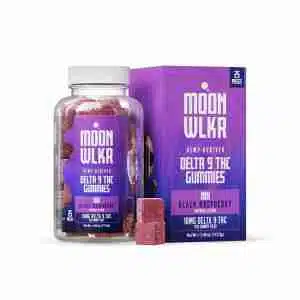
Tinctures and Alternatives
Tinctures are liquid extracts typically made by soaking plant materials, such as herbs or fruits, in alcohol to extract the desired compounds. They are often found in glass bottles and administered using droppers, with each dropper generally holding around 20 drops per milliliter (mL). This means that 1 mL of tincture contains approximately 20 drops, although the exact number may vary slightly depending on factors like the consistency of the tincture and the design of the dropper.
In recent years, alternative methods of consuming various active compounds have become more popular. One such option is edibles, which range from baked goods to candies and gummies. Edibles provide a discreet and often more enjoyable way to ingest substances, making them an appealing choice for many consumers. For instance, Delta 8 gummies offer one of several cannabinoid forms in an easy-to-enjoy format.
In addition to their enjoyable taste, gummies have a significant advantage over tinctures for those looking to avoid alcohol consumption. Tinctures usually contain some percentage of alcohol, while gummies and other edibles are typically completely alcohol-free.
However, tinctures still hold a unique appeal due to their versatility and faster absorption rate. They can be taken sublingually for rapid absorption, added to drinks, or even applied topically. With a wide variety of different strengths and flavors available, there are tinctures to suit a range of preferences.
While gummies and edibles provide an attractive alternative to traditional tinctures, it is important to consider individual needs and preferences. Ultimately, the choice between tinctures and alternatives like edibles should be based on factors such as taste preference, desired effects, and personal health considerations.

Regulations and Safety
In the world of herbal medicine, tincture dosing often varies, with small drop doses typically recommended, such as ten drops thrice daily. However, it’s essential to be aware of the regulations and safety measures associated with using tinctures.
The Food and Drug Administration (FDA) is responsible for regulating pharmaceuticals, including herbal medicines, in the United States. However, due to the complex nature of herbal products and the varying concentrations of active ingredients, precise regulation is often challenging. As a result, it is crucial for consumers to be diligent and educated about the products they use.
One factor to consider is the quality of the herbal medicine, as standardization is not always enforced, leading to varying levels of safety and effectiveness. For example, a clinical evaluation of Viscum album mother tincture as an antihypertensive utilized a dosage of 10 drops in 30mL of water. It’s essential to remember that optimal dosing may vary between different tinctures and individuals, highlighting the need for proper dosage guidelines and regulations.
States have different regulations for specific herbal products, such as Delta 8 THC, which is a compound in cannabis products. Understanding the legality of Delta 8 is essential to make informed decisions about its use, as legality varies by state in the United States, impacting the market and availability.
In conclusion, when working with tinctures, it is vital to consider regulations and safety measures associated with herbal medicines. Always consult with a knowledgeable healthcare professional to determine the proper dosage and use of these products to ensure their efficacy and safety.
Conclusion
In determining the number of drops in 1 ml of tincture, several factors come into play, such as the viscosity of the liquid and the size of the dropper. On average, there are approximately 20 drops in 1 ml of tincture. However, this value can vary depending on the specific tincture and dropper being used.
Tinctures are concentrated herbal extracts made by dissolving plant material in a solvent, typically alcohol or glycerin. They are commonly used in alternative medicine due to their ease of administration, extended shelf life, and ability to deliver the active constituents of the plant material.
Measurements involving tinctures should be done with care to ensure accurate dosing. It is important to follow the instructions provided by the manufacturer, as they may have specific conversion factors for their tincture based on the type and concentration of the formula. Ultimately, it is crucial to remember that one should not solely rely on the general rule of 20 drops per 1 ml for every tincture, as variations between the droppers and tinctures can yield different results.
In conclusion, the number of drops in 1 ml of tincture is an important aspect to consider when administering these herbal extracts. Familiarity with the specific tincture and dropper is essential in ensuring precise and effective dosing.
Frequently Asked Questions
What is the standard tincture dosage?
The standard tincture dosage can vary depending on factors like the herb being used, the potency of the tincture, and individual body responses. However, a common starting point is 10 drops thrice daily. It’s essential to consult with a healthcare professional or qualified herbalist when determining your optimal tincture dosage.
How do I determine tincture dosage for sleep?
Determining the tincture dosage for sleep can depend on the type of herbal extract being used. For instance, valerian and passionflower tinctures are commonly used to support sleep. Start with a low dose, such as 5-10 drops before bed, and gradually increase it if necessary under the guidance of a healthcare professional or experienced herbalist. As individual sensitivity and responses to herbs may vary, it’s crucial to pay attention to your body’s reaction when adjusting the dosage.
How can I measure drops of tincture accurately?
To measure drops of tincture accurately, use a dropper or pipette marked with volume measurements. Alternatively, count the drops one by one when dispensing the tincture. Keep in mind that the size of a drop can vary based on the dropper’s design and the tincture’s viscosity, so it’s best to use a consistent method or device for accurate measurement.
How does edible dosage compare to tincture dosage?
Edibles and tinctures are different methods of consuming herbal extracts or medicinal compounds. Edibles, such as gummies or capsules, have a pre-measured dose and can take longer for the body to absorb, compared to tinctures, which are administered under the tongue. Tinctures are quickly absorbed, often leading to a faster onset of effects. When comparing dosages, be aware that the potency of edibles and tinctures may differ, and it’s essential to follow the recommended dosages and consult with a healthcare provider or qualified herbalist when in doubt.
What is the serving size for LEVIA tincture?
The serving size for LEVIA tinctures may vary depending on factors such as the concentration of the herbal extract and the intended use. Always read the product label or consult with a healthcare professional or experienced herbalist to determine the appropriate serving size for your specific needs.
How is Trulieve tincture dosage different?
Trulieve tincture dosage can vary based on the concentration of the herbal extract or medicinal compound in the product. As with other tinctures, consult your healthcare professional or herbalist to establish the correct dosage for your individual needs. It’s essential to start with the lowest recommended dose and gradually increase if necessary while monitoring your body’s reaction to the tincture.




